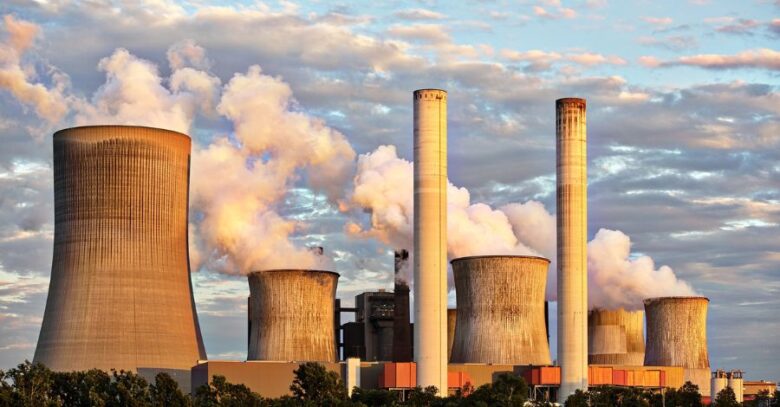Tragic incidents like the Chernobyl and Fukushima nuclear disasters serve as somber reminders of the devastating consequences that can result from safety failures.
However, these disasters also provide invaluable lessons and opportunities for enhancing safety protocols in various industries.
This article explores the lessons learned from Chernobyl and Fukushima and how they have shaped and improved safety protocols in different sectors.
Understanding Chernobyl and Fukushima
The Chernobyl and Fukushima disasters are two of the most significant nuclear accidents in history, each leaving a lasting impact on the world. Chernobyl, located in Ukraine, experienced a catastrophic reactor explosion in 1986, resulting in the release of a substantial amount of radioactive materials. Fukushima, situated in Japan, faced a similar fate in 2011 when a massive earthquake and subsequent tsunami triggered a meltdown at the nuclear power plant.
These incidents brought to light the vulnerabilities and shortcomings within the nuclear industry, leading to a global reevaluation of safety protocols and regulations. Understanding the specific circumstances and causes of each disaster is crucial in identifying areas for improvement and preventing future occurrences.
Lessons Learned from Chernobyl
The Chernobyl disaster shed light on several critical lessons. Firstly, it revealed the significance of a strong safety culture and the need for rigorous adherence to established protocols. The lack of a safety culture at Chernobyl contributed to the inadequate implementation of safety measures and a disregard for warning signs.
Furthermore, Chernobyl emphasized the importance of proper training and preparedness for emergency situations. Many of the workers involved in the accident were not adequately trained to handle the complex and dangerous circumstances, exacerbating the consequences.
Additionally, Chernobyl highlighted the necessity of transparency and open communication. The initial attempts to conceal the severity of the incident delayed response efforts and hindered the international community’s ability to provide assistance.
Lessons Learned from Fukushima
The Fukushima disaster also presented significant lessons for the nuclear industry and beyond. One crucial lesson was the need to consider external hazards and their potential impact on nuclear facilities. The powerful earthquake and subsequent tsunami overwhelmed the Fukushima plant’s safety systems, leading to the meltdowns. This highlighted the importance of designing infrastructure and safety measures capable of withstanding extreme events.
Another lesson from Fukushima was the importance of effective risk communication and crisis management. Clear and timely communication to the public and relevant stakeholders is vital during such incidents to manage panic, provide accurate information, and coordinate evacuation and response efforts.
Furthermore, Fukushima underscored the necessity of continuous reassessment and improvement of safety protocols. The accident prompted a global reevaluation of nuclear safety standards, leading to stricter regulations, improved emergency preparedness, and enhanced monitoring of nuclear facilities.
By examining the lessons learned from both Chernobyl and Fukushima, industries and governments worldwide have been able to enhance their safety protocols and mitigate the risks associated with nuclear power generation. These lessons have informed advancements in reactor design, emergency response planning, safety culture development, and international collaboration to prevent similar incidents in the future.
Enhancing Safety Protocols in the Nuclear Industry
The Chernobyl and Fukushima disasters prompted significant enhancements in safety protocols within the nuclear industry. These improvements aim to prevent similar incidents and mitigate the consequences if they occur. One important aspect of enhancing safety protocols is the development of advanced reactor designs that incorporate passive safety features. These features rely on natural processes, such as gravity and convection, to cool the reactor and prevent overheating in the event of a loss of power or other emergencies.
Additionally, stricter regulatory standards and more robust oversight have been implemented to ensure compliance and accountability. Regulatory bodies conduct thorough inspections, enforce safety guidelines, and require comprehensive emergency response plans. The goal is to maintain a strong safety culture that permeates all levels of the nuclear industry, from operators to management.
Furthermore, the exchange of best practices and lessons learned is essential for enhancing safety protocols. International collaborations and knowledge-sharing platforms, such as the International Atomic Energy Agency (IAEA), facilitate the dissemination of information and expertise. Through these collaborations, countries and organizations can learn from each other’s experiences, conduct safety assessments, and implement improvements.
Translating Lessons to Other Industries
The lessons learned from Chernobyl and Fukushima extend beyond the nuclear industry and have influenced safety protocols in various sectors. Industries such as oil and gas, chemical manufacturing, aviation, and healthcare have adopted the principles of safety culture, risk assessment, and continuous improvement inspired by these disasters.
For example, the oil and gas industry has implemented more stringent safety regulations, enhanced emergency response plans, and improved communication protocols to prevent accidents and respond effectively to incidents. The chemical manufacturing sector has focused on process safety management, hazard identification, and risk assessment to minimize the potential for catastrophic events.
In aviation, lessons from nuclear incidents have contributed to the development of rigorous safety procedures and protocols. The industry emphasizes comprehensive training programs, risk assessment methodologies, and robust maintenance practices to ensure safe operations.
Healthcare, too, has embraced lessons from nuclear disasters, incorporating principles such as error reporting, root cause analysis, and a culture of continuous learning. The focus is on enhancing patient safety through systems thinking, effective communication, and standardized protocols.
Collaboration and Knowledge Sharing
The tragedies of Chernobyl and Fukushima have fostered collaboration and knowledge sharing among industries and regulatory bodies. Forums, conferences, and working groups facilitate the exchange of experiences and best practices, enabling industries to learn from one another and continuously improve their safety protocols.
Collaboration extends not only among industries but also across borders. International bodies like the IAEA serve as platforms for cooperation and information exchange. They promote the harmonization of safety standards, assist in capacity building, and facilitate emergency response coordination.
Furthermore, advances in technology have facilitated collaboration and knowledge sharing. Online platforms, data repositories, and real-time information sharing systems allow organizations to access and analyze safety-related data, disseminate lessons learned, and coordinate efforts to prevent and mitigate risks.
By working together, industries can benefit from shared experiences, leverage best practices, and collectively strive for higher safety standards. The collaboration and knowledge sharing inspired by the lessons of Chernobyl and Fukushima have laid the foundation for continuous improvement and a collective commitment to safer practices.
Continuous Improvement and Vigilance
Continuous improvement and vigilance are fundamental aspects of risk management that are crucial for maintaining safety in various industries. This proactive approach involves regularly assessing and refining safety protocols, identifying potential risks, and implementing preventive measures to mitigate them.
One key element of continuous improvement is conducting thorough risk assessments. This involves identifying hazards, evaluating their likelihood and potential impact, and prioritizing resources and actions based on their level of risk. By regularly reviewing and updating risk assessments, organizations can stay ahead of emerging threats and adapt their safety protocols accordingly.
Vigilance goes hand in hand with continuous improvement, as it requires organizations to be attentive and alert to potential risks at all times. This includes maintaining effective monitoring systems, conducting routine inspections, and encouraging employees to report any safety concerns or near-miss incidents. By fostering a culture of vigilance, organizations can detect and address potential risks before they escalate into major incidents.
Additionally, organizations must embrace a culture of learning and innovation. This involves actively seeking feedback from employees, engaging in root cause analysis of incidents and near-misses, and implementing corrective actions to prevent future occurrences. By fostering an environment that encourages open communication and learning from mistakes, organizations can continuously improve their safety protocols and prevent complacency.
Conclusion
The tragedies of Chernobyl and Fukushima have profoundly influenced safety protocols across industries, translating lessons learned into enhanced practices and procedures.
From the nuclear industry to other sectors, the importance of safety culture, effective communication, risk assessment, and continuous improvement has become ingrained.
By learning from these tragedies and implementing the lessons, we honor the memory of those affected and strive to create safer environments for present and future generations.




